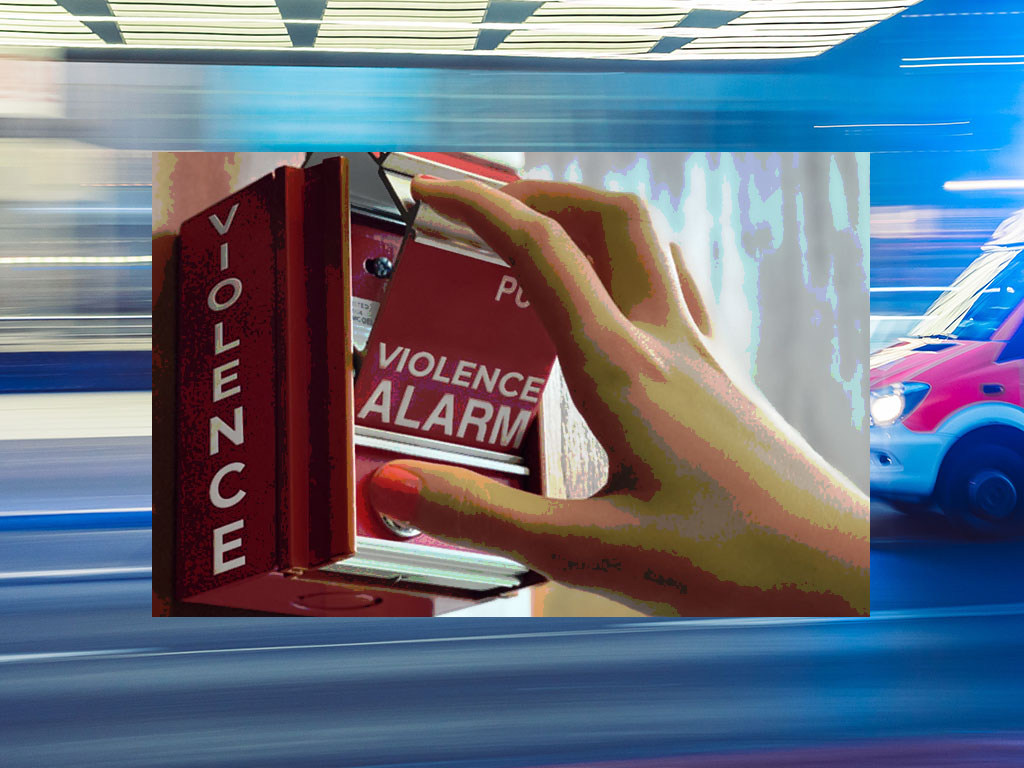Shriners Hospital for Children
The Essential Employee Peer-to-Peer Violence
in Healthcare Public Health Campaign
Educating healthcare workers about reporting workplace violence
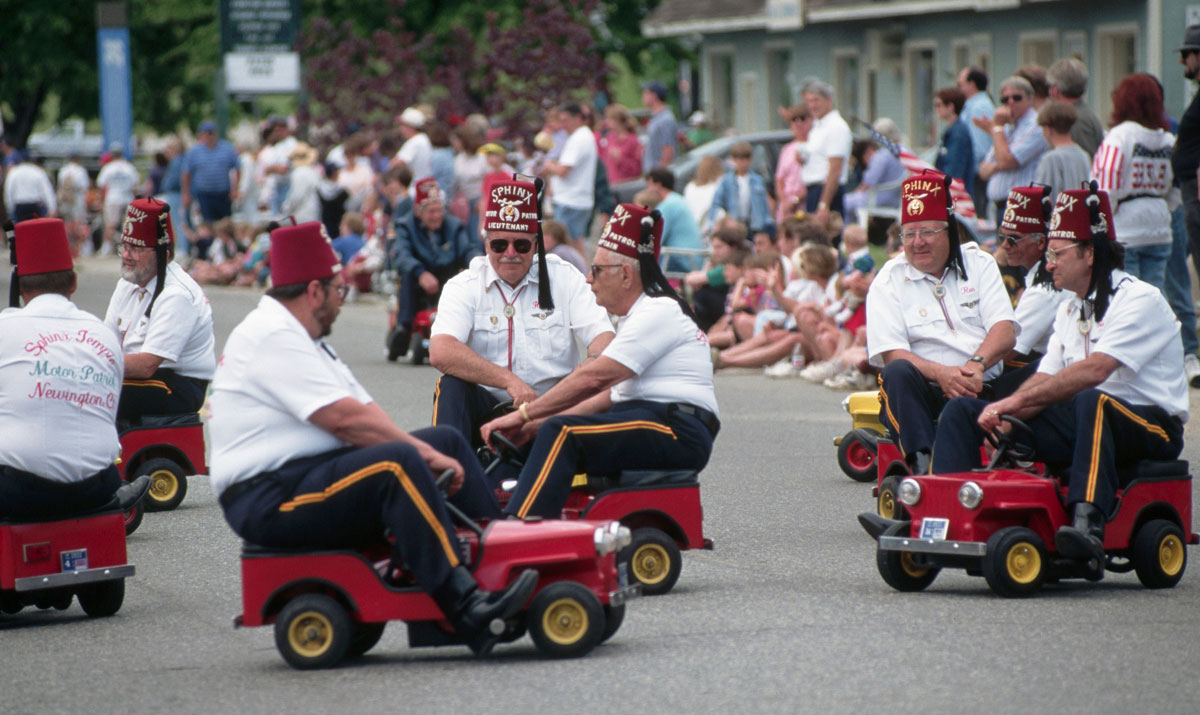
Shriners History
Since opening the doors of our first hospital in Shreveport, Louisiana, in 1922, Shriners Hospitals for Children has grown into one of the finest pediatric specialty health care systems in the world. Thanks to the dedication and hard work of members of the Shriners International fraternity – the organization that founded and continues to support the health care system – one hospital soon became two, two became 10, and by 1985 22 Shriners Hospitals for Children were making a difference in the lives of children in the U.S., Canada and Mexico.
As Shriners Hospitals for Children has continued to evolve over the decades, so, too, has its brand. In 2007, the organization initiated a system-wide branding effort to create consistency in the look and feel of materials throughout the Shriners Hospitals for Children health care system. Creating this brand cohesion and uniformity was paramount in an increasingly connected world, where we wanted to be recognized not as a loose network of individual hospitals, but as a united health care system that was changing the lives of children and re-inventing medical care through research and education.
What has never changed over the years is Shriners Hospitals for Children’s dedication to providing the best specialty medical care to children, regardless of the families’ ability to pay. So today, our brand builds on our history, honors our deeply-rooted traditions, and conveys our compassion, expertise and dedication to improving the lives of children.
Design Journey
The Public Health Campaign journey began with the idea “Sound the Alarm on Workplace Peer Violence” and an iStock by Getty Images photo titled “Hand pulling down fire alarm on brick wall stock photo.” Rather than pay the $12 fee to download the high-resolution photograph for my project, I decided to use the photographic knowledge that I acquired at the New England Institute of Technology in the associates degree program.
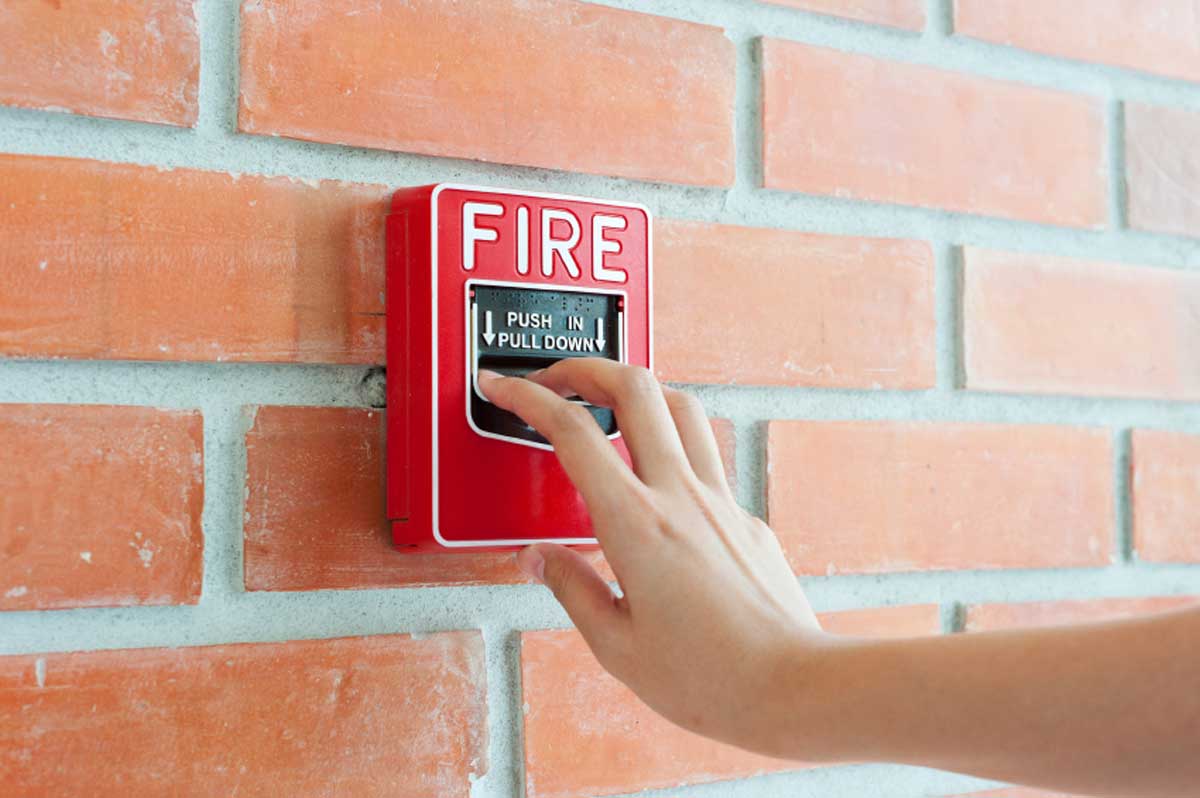
Acknowledgements

A special thanks to Mr. Dennis Y. McGouran, Westerly Fire Department’s fire marshal & alarm superintendent. Dennis deactivated an actual fire alarm pull station for purpose of this Public Health Campaign photo-shoot. Another special thanks goes out to hand model Mia Clarke and her mother Melinda Clarke, lighting assistant.
On Saturday, February 29th, I visited my local fire house in Westerly, Rhode Island early in the morning and pounded on the door seeking help. I did not have a fire but needed to photograph a model pulling a small fire box to replace a stock photo that was being used.
No one answered my cry for help. So I waited. Soon after, a volunteer fireman named Mark arrived. He told me that the firehouses are not manned because they are mostly volunteers. Mark told me that he couldn’t do what I needed but knew someone who could help me with my special project. Mark contacted Dennis Y. McGouran, Westerly Fire Department’s fire marshal & alarm superintendent.
Dennis called me and said that he could help me out and invited me to a fire house near the Westerly Yacht Club. I texted my model to meet up with us at the new photo-shoot location.
I met Mark, Mia Clarke, her mother Melinda Clarke, and took this incredible photograph using my iPhone 11 Pro Max. The lighting conditions within the firehouse posed an exposure challenge, as the hallway was dark and was lit by natural sunlight from the all glass doorway entrance. I originally attempted using my Canon DSLR camera mounted on a tripod, two-point flash units using a single diffuser box, remote flash triggers, and a gold 32″ 5-in-1 collapsible reflector disc.
The reflector disc is used for portrait shoots as well as small still life setups. Melinda Clarke held the reflector disc which allowed me to quickly and easily make adjustments to my lighting in order to get the look I wanted.

Design Rationale
The Public Health Campaign “Sounding the Alarm on Workplace Peer Violence” concept has an element of anonymity for the public good.
The color scheme is a combination of the Shriners Hospitals for Children logo and the homepage hero photograph. The typography and formatting will appeal to a young target audience, as it incorporates a clean, modern design with limited copy.
The image of an actual alarm, with a female hand pulling down the handle, will be immediately recognizable as a universal symbol of “raising alarm to warn others” and “calling for help to save oneself” by all ages, genders, and nationalities.
Photography
I took the photograph at the Westerly Fire Station in Rhode Island and airbrushed the word “fire” out of the photograph. I replaced the word “fire” with the word “violence.” The resulting image is now a woman actively sounding the Violence Alarm!


Sketches
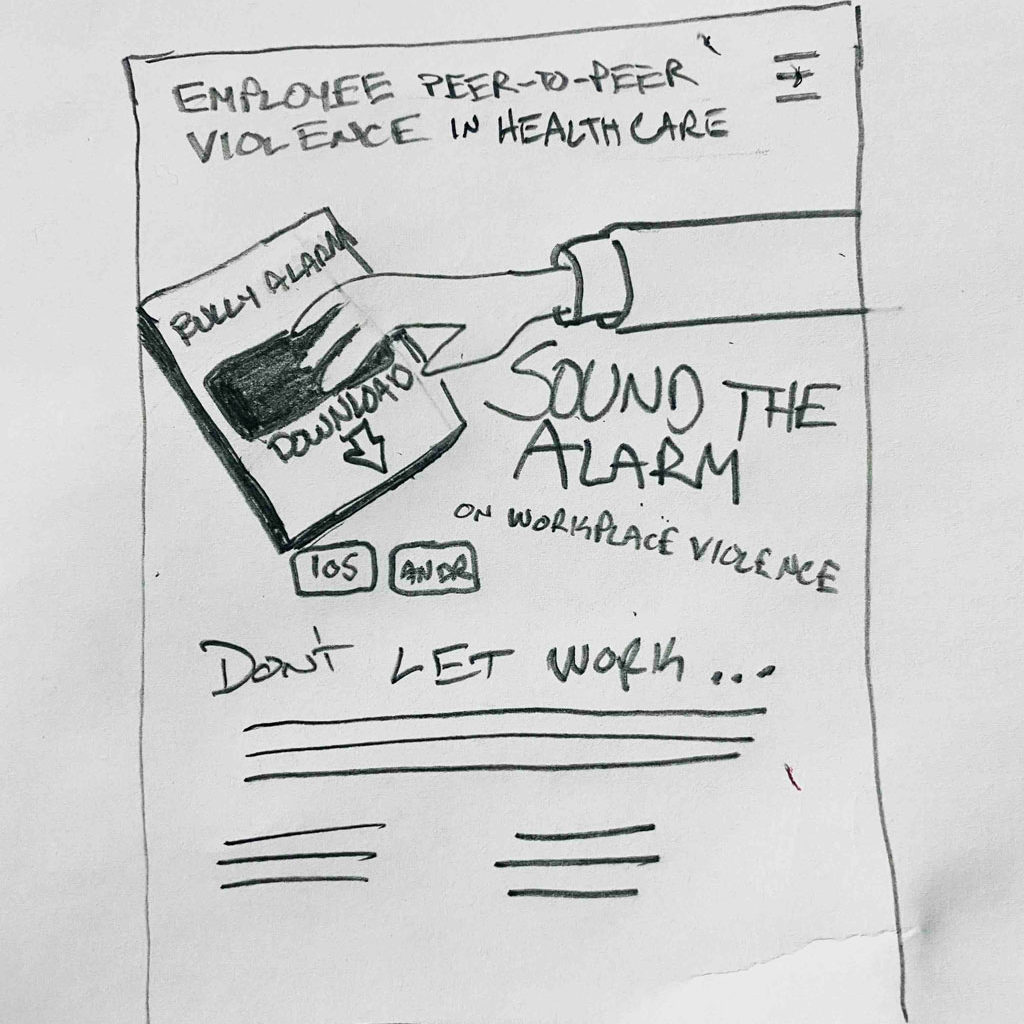
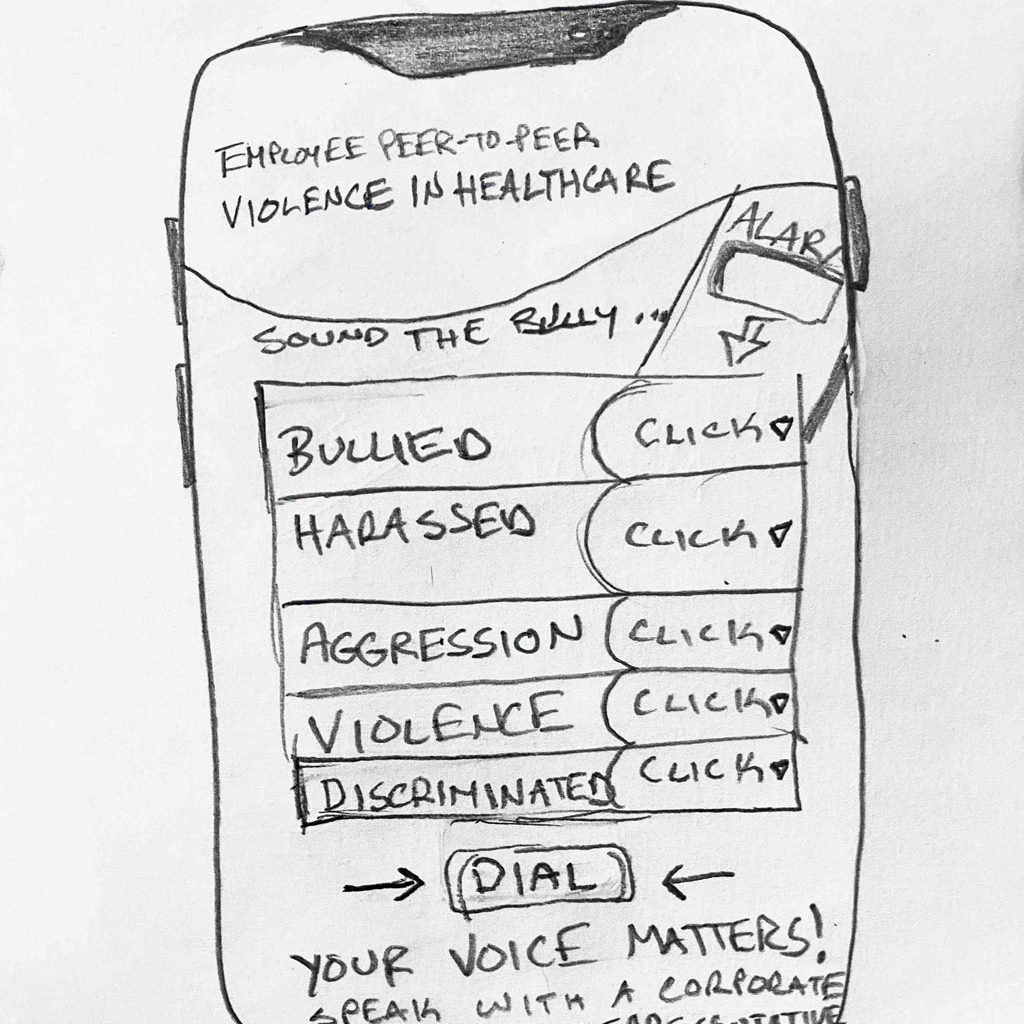
Branding

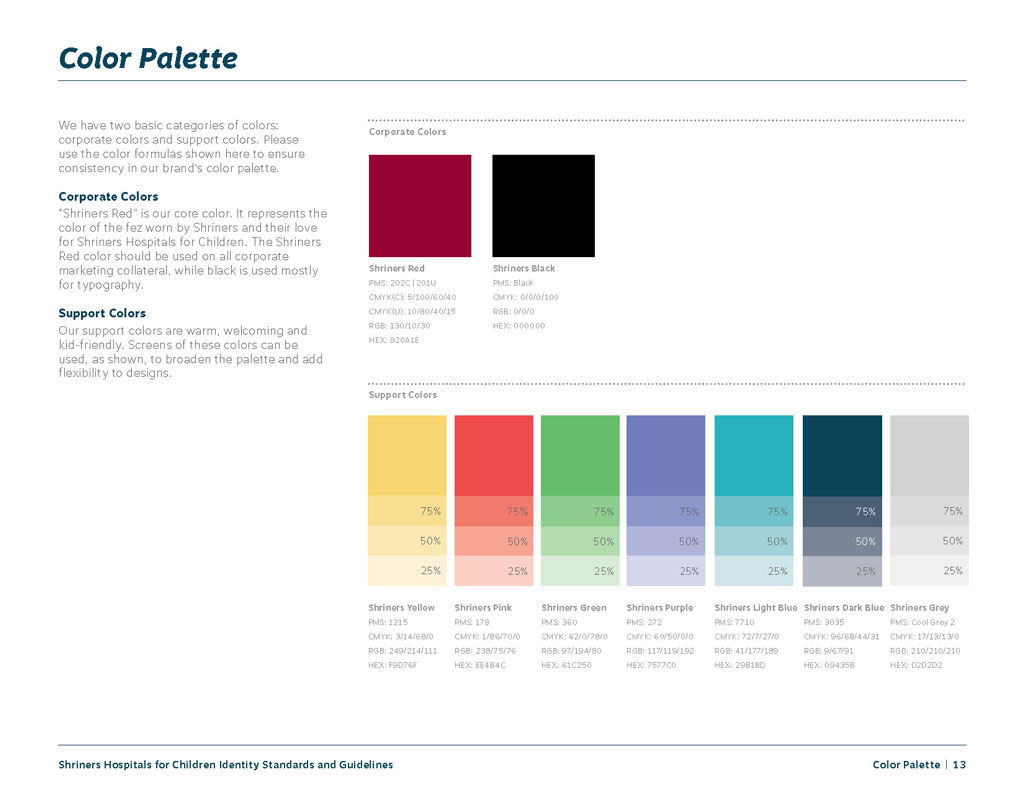
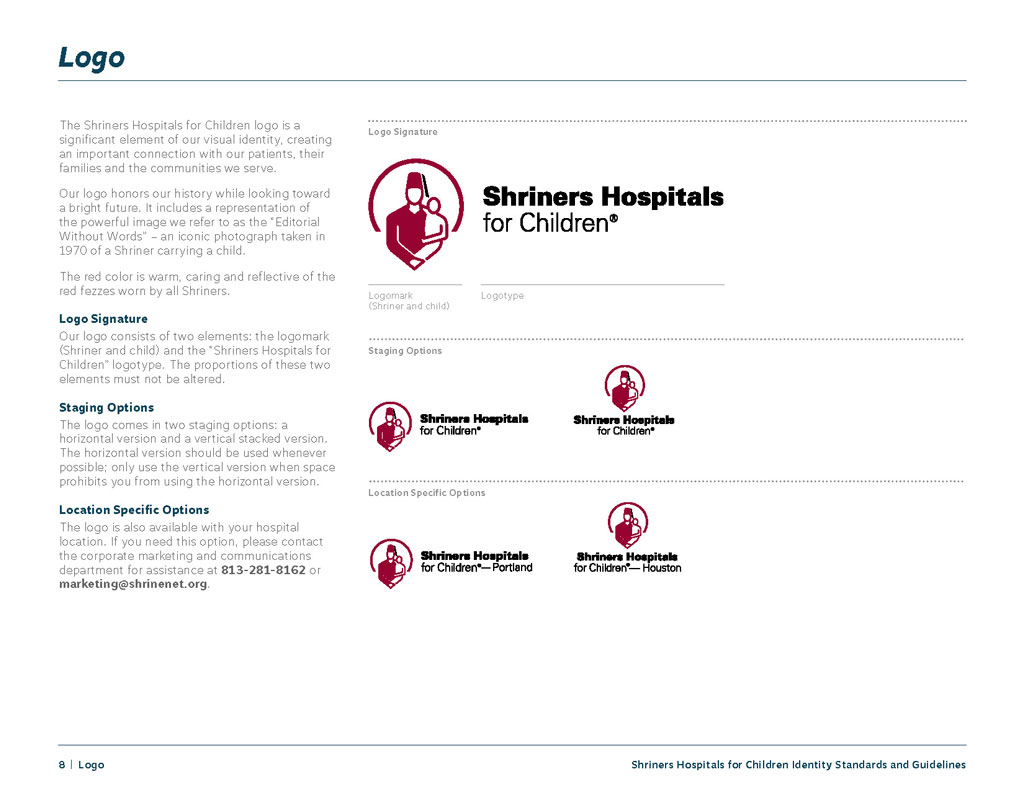
Deliverables
The new photograph was then placed on the homepage and incorporated into the mobile app design. I created an Shriners Workplace Peer Violence logo for the website and app store. I also used the actual Shriners Hospital for Children logo and color scheme in my design.
- Public Health Campaign Website: A mock-up of an accessible website including a telephone compliance line as well as a Mobile App for anonymous reporting.
- Public Health Campaign Social Media: The goal is to create a social marketing campaign that educates the employees about the actual peer violations in healthcare at the same time encourage them to use the anonymous reporting channels which are going to be web based.
Logo
The fez is one of the most recognizable symbols of Shriners International and was adopted as the Shriners’ official headgear in 1872. Named after the city of Fez, Morocco, the hat represented the Arabian theme the fraternity was founded on. It also serves as an outward symbol of one’s membership in the fraternity. Much like the white apron worn by Masons as a symbol of their brotherhood, the fez is worn only by Shriners as a symbol of their membership in this unique fraternity.
Today the fez is worn at Shriners’ functions, in parades and at outings as a way of gaining exposure for the fraternity. Members customize their fez to show their allegiance to their temple. Look closely at a fez and you will also learn other important information about its wearer, such as membership in Shrine clubs, special roles within the organization and much more. Each fez is custom made and a Shriner may own more than one fez depending on his activities and memberships.
I created my Shriners Hospital app logo (left) using the original Shriners Hospital logo (right) as inspiration. I added a fez to a bell and used the Shriners Hospital branded color scheme, typography and style.


Homepage Copy
Sound The Alarm On Workplace Peer Violence!*
Don’t let workplace peer violence go unreported by victims or coworkers … Sound the Alarm!
There’s no place for Workplace Peer Violence! Violent offenders thrive on silence from victims and witnesses. Encourage your team members to communicate by finding help on our website, mobile app, and social media channels.
The Employee Peer-to-Peer Violence in Healthcare (EPPVH) app is your one-stop Workplace Peer Violence prevention, training, and resource.
Website Homepage
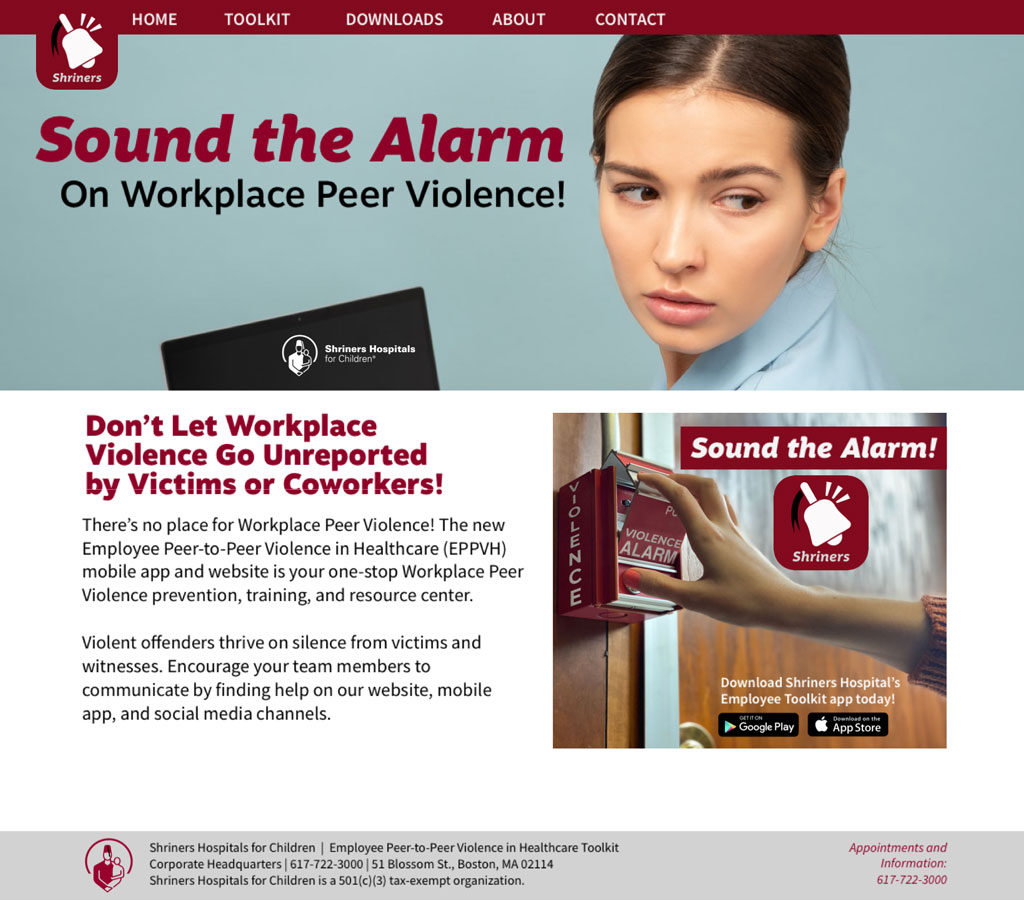
Mobile App Download Page

Social Media Graphic
Posted Public Health Campaign Message: Violent offenders thrive on silence from victims and witnesses. Encourage your Shriners Hospital team members to communicate by finding help on our website, mobile app, and social media channels.
Download the Employee Peer-to-Peer Violence in Healthcare (EPPVH) app for Workplace Peer Violence prevention, training, and resources.
Hashtags: #shrinershospitals #eppvh #healthcare #violence #peer #workplace #resources
Long tail filename: shriners-hospitals-workplace-peer-violence-healthcare.jpg

Public Health Campaign Specs
Target Audience
- Shriners Hospital Employees 18–24 years
- Shriner’s group of hospitals employs about 7,000 employees.
- Violence is happening between fellow peers that may belong to various psycho dynamic groups.
Limitation
- Piloted on the social marketing plan through them.
- Shriners Hospitals has a reporting channel that could be strengthened by making them retaliation free.
- The plan is to promote the anonymous reporting channels.
- The list of violations and their definition will be on the reporting channels.
Purpose
- The main product will be the website for the anonymous reporting channels
- House and support the anonymous reporting channel
- Disseminate the necessary information to our audience about the reportable violations including their definition.
- Share current information on research, case studies and personal stories that can be shared such as the ones dominating the airwaves and will also feature nuggets on conflict resolution skills or workplace survival skills.
- In a nutshell it will be a place that stands with the reporter and gives hope and assurance that “we hear you” and something will be done about your situation with full job protection.
Message
- To promote the use of the anonymous reporting channels for any workplace peer violence experienced, witnessed or coerced into participating.
- We want the employees to believe that they will not promote peer violence in their workplace by standing up to it through reporting using the anonymous reporting channels.
Strategy
- Partner with employee assistance programs to offer relief to affected employees.
- Affected employees will include both perpetrators and victims (this is just to explain how the program would work).
Marketing
- Site the violations and show the relief that could come with reporting.
- A revolving door of may be people or person down cast at the beginning
- A list of possible peer violations
Outcome
- A happier workplace
- Improved workplace productivity or staff engagement
- Show happier family life or community (third party effects).
Toolbox
- Workplace Violent Behaviors
- Perpetual Verbal Fights
- Threats
- Harassment
- Mobbing
- Aggressive Psychological Violence
- Incivility
- Insubordination
- Isolation
- Intimidation
- Bullying
Value Proposition
“We are capable of moving past the things that divide us.”—Obama
Client
Syntyche Mashamba, Public Health master degree program at the New England Institute of Technology and employee at Shriners Hospital for Children.
Links
Check out some other public health related case studies on my website!
Share via:


